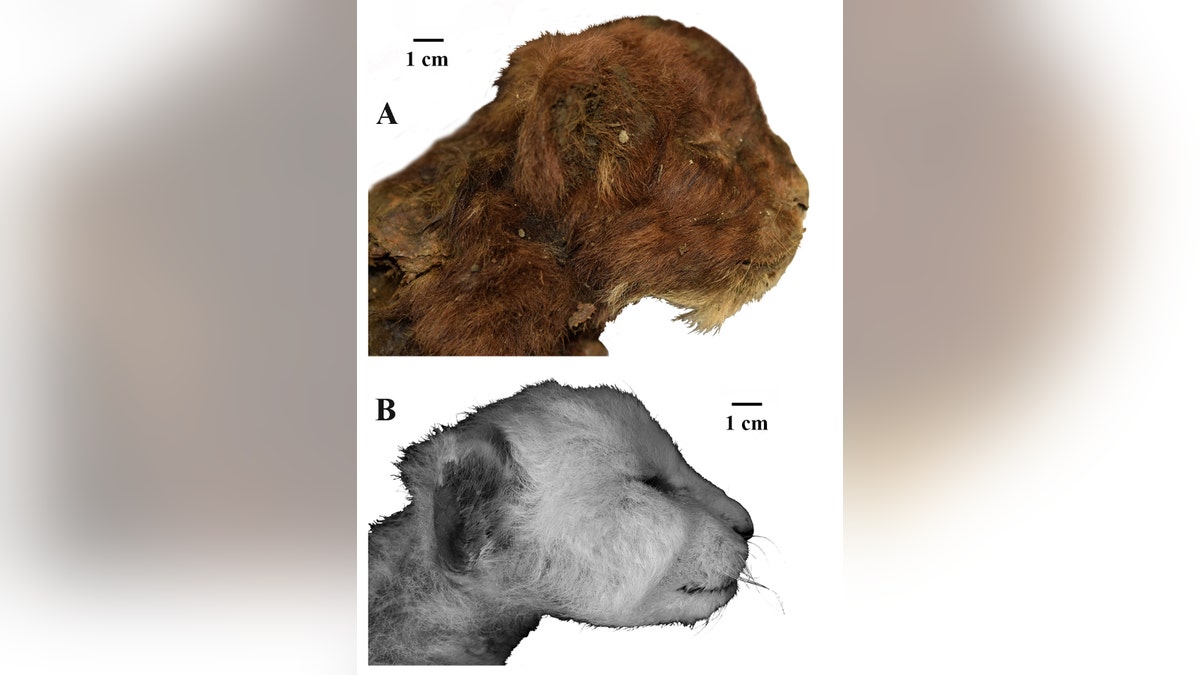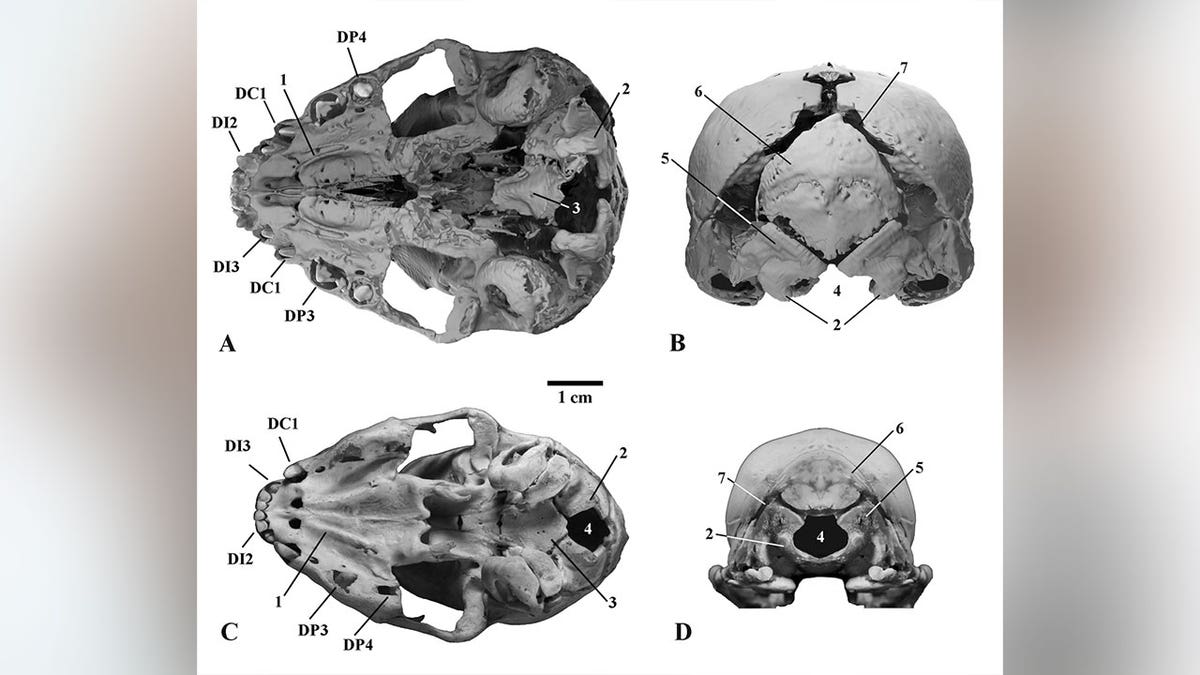A mummified saber-toothed cub dating back 35,000 years was left almost perfectly preserved in Siberia’s permafrost.
The remains had been found back in 2020, northeast of Yakutia, Russia. Research regarding the study of the cub was published in the journal Scientific Reports on November 14, 2024.
The discovery of frozen remains from the Late Pleistocene period is “very rare,” according to the published research, though most discovered in Russia lie in the Indigirka River basin, the authors note.
The mummified saber-tooth cub found in Siberia’s permafrost was studied by scientists and found to have been buried around 35,000 years ago. (Alexey V. Lopatin)
12-YEAR-OLD BOY STUMBLES UPON STUNNING ANCIENT FIND WHILE WALKING DOG IN ENGLAND: ‘RELATIVELY RARE’
The mummified cub remained well-preserved, frozen in time for thousands of years. The frozen nature of this find left it in impressive condition, even still containing fur.
“The mummy body is covered with short, thick, soft, dark brown fur with hair about 20–30 mm long,” the authors wrote in the published research, also pointing out that the fur that was located on the back and neck of the cub was longer than the hair that was found on the legs.
The head of the mummy was also left well-preserved, down to its chest, front arms and paws.
IRISH FARMER FINDS NEAR-60-POUND SLAB OF ANCIENT BOG BUTTER ON HIS LAND BY ‘PURE LUCK’
The study of this find wasn’t just a unique opportunity for scientists, it also provided first-of-its kind research.
“For the first time in the history of paleontology, the appearance of an extinct mammal that has no analogues in the modern fauna has been studied,” the authors of the study explained.

This discovery provided an extremely unique and rare opportunity for scientists to study an extinct species that was so well preserved. (Alexey V. Lopatin)
The scientists determined that the cub had died at about three weeks old. It was identified by the authors of the study as belonging to the species Homotherium latidens and had many differentiations from a modern lion cub of a similar age.
The shape of the muzzle displayed by the mummified cub, which had a large mouth and small ears, plus a “massive” neck, long forelimbs and a darker colored coat, were all among key differences from today’s modern lion cubs that scientists observed.
2,000-YEAR-OLD ROMAN ROAD DISCOVERED BY ARCHAEOLOGISTS IN LONDON
Scientists also worked in their research to find out how the extinct species was able to survive through frigid temperatures.
Large contributors to their survival were the shape of the large paws and absence of carpal pads. Scientists believe these elements helped them get through the snow.
In recent years, there have been other ancient animals found in Siberian permafrost.

Analysis of the cub’s skull helped scientists identify it as belonging to the genus Homotherium. (Alexey V. Lopatin)
CLICK HERE TO GET THE FOX NEWS APP
For example, in 2021, a mummified wolf was discovered that dated back over 44,000 years, Live Science reported in June 2024.


